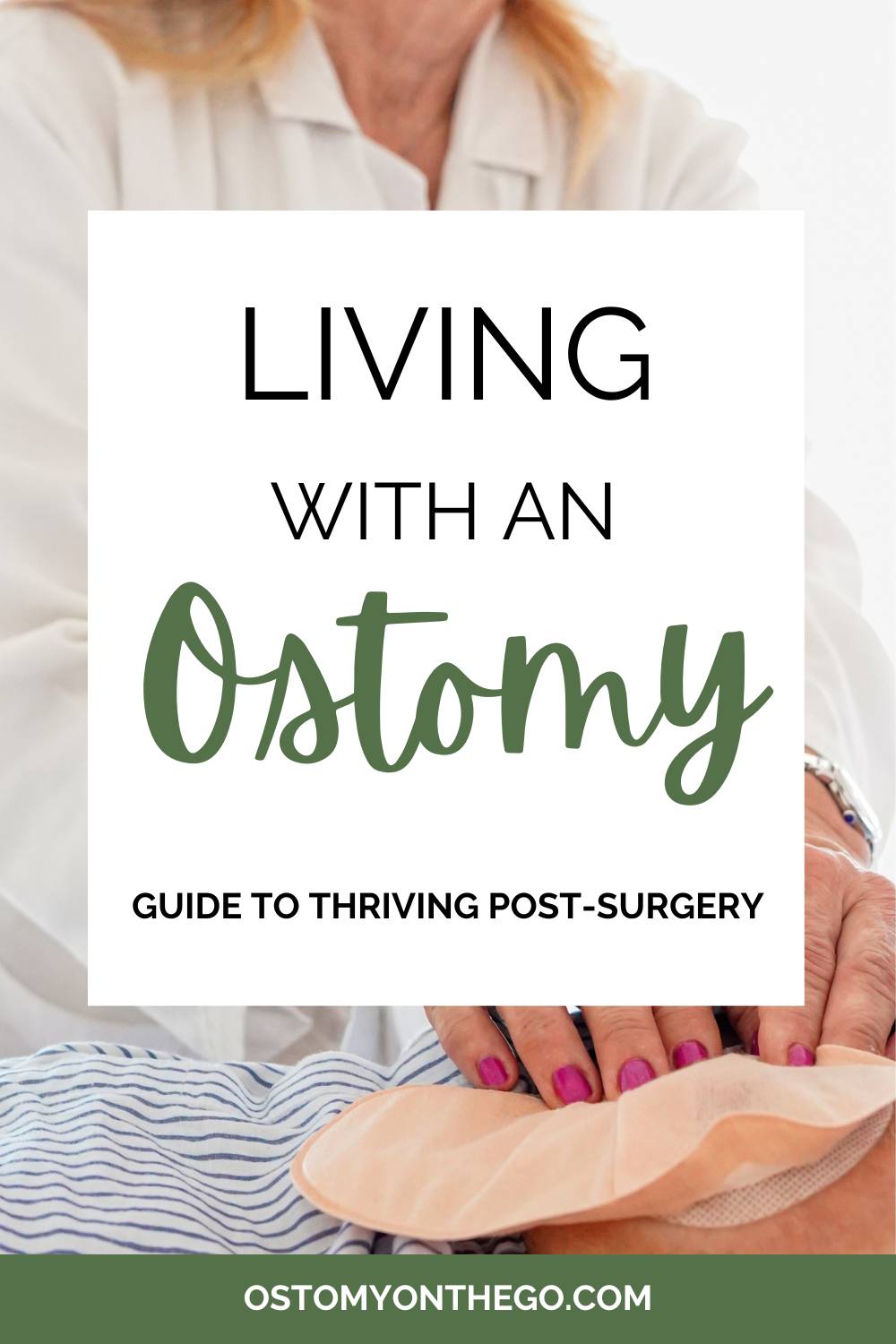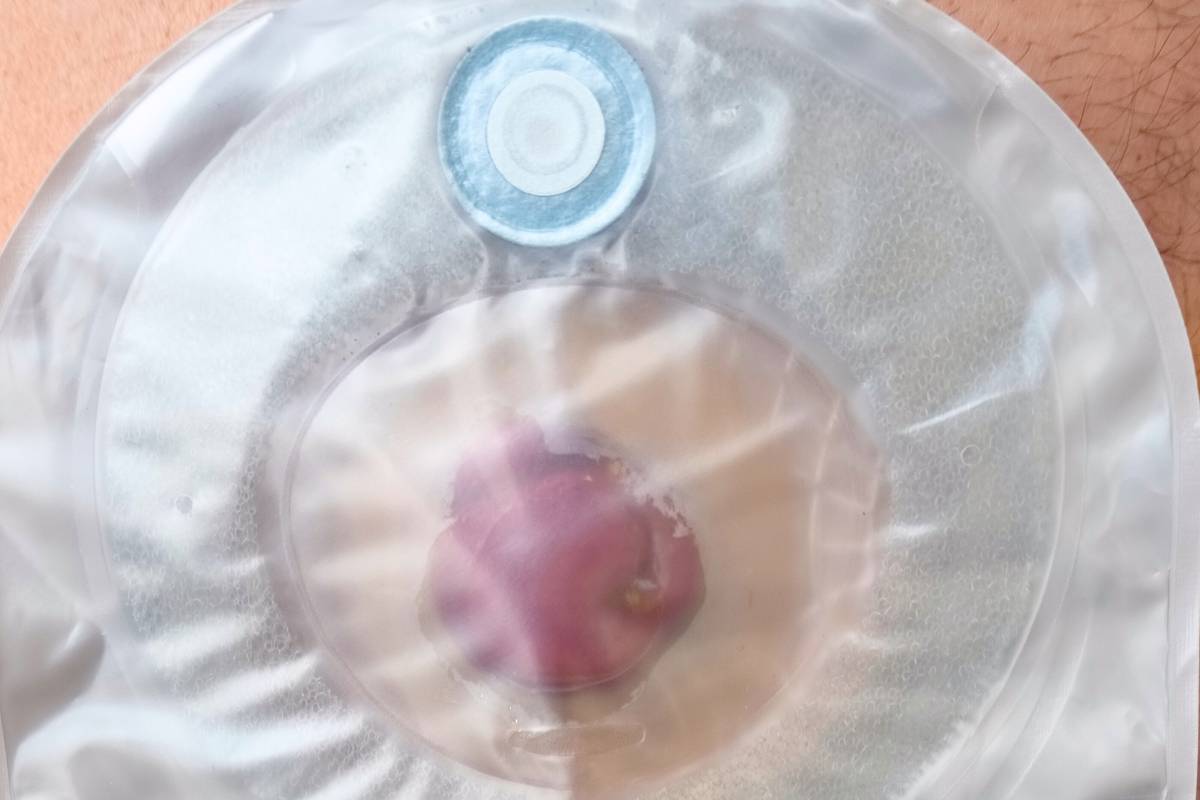Living with an ostomy can feel overwhelming, especially in the days and weeks following surgery. When I underwent a total colectomy, I faced moments of deep uncertainty and emotional struggle. Adjusting to life without my bowel was daunting, and after spending 60 days in the hospital, I was eager to go home but terrified at the thought of managing my new stoma and caring for myself post-surgery.
However, as I navigated this new chapter, I discovered that living with an ostomy wasn’t as difficult as I initially feared. With time, patience, and the right knowledge, I found ways to adapt and thrive. That’s why I’m sharing my essential tips for anyone new to life with an ostomy, including practical advice for managing self-care after surgery.

Whether you’re just starting this journey or looking for additional support, I hope these insights will help you feel more confident and empowered.
Why Do People Need an Ostomy?
This procedure can be temporary or permanent and is often performed for conditions like Crohn’s disease, ulcerative colitis, or cancer.
For many people, adjusting to life with an ostomy takes time, but it also opens the door to renewed health and independence.
My mission is to make this journey easier by providing clear, actionable guidance and fostering a sense of connection for anyone navigating life with a stoma.
Adjusting to Living With an Ostomy
Adapting to life with a stoma can feel overwhelming, but it’s also an opportunity to take back control of your health and daily activities. Whether you’ve had a colostomy, ileostomy, or urostomy, understanding how to care for your stoma and navigate life post-surgery is the first step to thriving.
Understanding the Difference Between an Ostomy, Ileostomy, and Colostomy
When discussing ostomy procedures, it’s important to understand the distinctions between an ostomy, ileostomy, and colostomy. Each involves the creation of a stoma—an opening in the abdomen that allows waste to exit the body—but they serve different purposes based on the type of medical condition being treated.
What Is an Ostomy?
An ostomy is a general term for a surgical procedure that creates a stoma to reroute bodily waste. This is often necessary for individuals with conditions that impair the normal function of their digestive or urinary systems.
What Is an Ileostomy?
An ileostomy is a specific type of ostomy where the small intestine (ileum) is brought through the abdominal wall to create the stoma. This procedure bypasses the colon and rectum entirely. Ileostomies are commonly used to treat conditions such as Crohn’s disease, ulcerative colitis, or familial adenomatous polyposis. Waste from an ileostomy is typically liquid or semi-solid due to the absence of water absorption by the colon.
What Is a Colostomy?
A colostomy involves creating a stoma from the colon (large intestine). This procedure may be temporary or permanent, depending on the underlying condition, such as colorectal cancer, diverticulitis, or traumatic injury. Waste from a colostomy is usually more solid and formed compared to an ileostomy, as the colon has absorbed more water before it exits the body.

Key Differences Between Ileostomy and Colostomy
- Location of Stoma: An ileostomy stoma is created from the small intestine, while a colostomy stoma is formed from the large intestine.
- Consistency of Waste: Ileostomy output is more liquid, whereas colostomy output is typically more solid.
- Underlying Conditions: Ileostomies are often used for inflammatory bowel diseases, while colostomies are more common in cases involving the colon or rectum.
Regardless of the type of procedure, living with a stoma can take some adjustment. Modern ostomy products are designed to be discreet, secure, and easy to manage, helping individuals regain confidence and maintain an active lifestyle.
Understanding the differences between these procedures can help patients and caregivers make informed decisions and better prepare for life after surgery.
Common Challenges for Ostomates
- Preventing Ostomy Leaks: One of the most common concerns for ostomy patients is preventing leaks. Properly fitting your appliance, using the right adhesive, and maintaining good skin care can help reduce leaks and irritation.
- Finding Ostomy-Friendly Clothing: Comfortable, stylish clothing options are available that can help you feel confident while accommodating your stoma. High-waisted pants, ostomy wraps, and loose-fitting shirts are popular choices.
- Traveling with an Ostomy: From packing extra supplies to passing through airport security, traveling with an ostomy requires a little extra preparation. With the right tips, you can confidently explore the world.
Diet and Nutrition After Ostomy Surgery
Eating well is a key part of adjusting to life with an ostomy. While everyone’s body reacts differently, some general guidelines include:
- Avoiding high-fiber foods initially, then gradually reintroducing them.
- Staying hydrated to prevent blockages and dehydration.
- Identifying foods that may cause gas or odor, such as beans, onions, and carbonated drinks.
- Avoiding foods that could potential cause a blockage such a seeds, nuts, and other hard to digest foods.
Navigating the Emotional Journey of Living with an Ostomy Bag
Adjusting to life with an ostomy bag can be a significant emotional challenge. Many people feel uncertain, self-conscious, or even embarrassed at first. However, understanding that an ostomy bag provides freedom and control over your health can help shift your perspective.
Overcoming Emotional Challenges
It’s normal to feel hesitant about discussing your ostomy bag with others, but finding a trusted support system can make all the difference. Joining a support group, either in-person or online, can connect you with people who understand your journey.
For young patients or parents of children with an ostomy, addressing emotional well-being is especially critical. Bullying, social pressure, and the challenges of growing up can make this adjustment harder for younger individuals. Seeking guidance from mental health professionals and connecting with community resources can ensure they feel supported and confident.
Tips for Thriving While Living With an Ostomy
While adjusting to an ostomy bag involves a learning curve, many people find that the benefits far outweigh the challenges. From physical health improvements to regaining independence, life with an ostomy can open doors to new opportunities.
Staying Active With an Ostomy
You don’t have to give up on an active lifestyle. With proper preparation, you can enjoy activities like swimming, cycling, and weightlifting. Specialized ostomy belts and discreet bags make it easier to participate in physical activities confidently. If you’re a fan of high-impact sports, your healthcare provider can help you find alternatives that protect your stoma while keeping you active.
Managing Diet and Health
Your diet may require some adjustments to prevent gas and irritation, but experimenting with different foods can help you find what works best for you. Staying hydrated and following your healthcare provider’s recommendations are key to maintaining overall well-being.
Building Confidence Living With an Ostomy
Today’s ostomy bags are more discreet than ever, and ostomy-friendly clothing options allow you to feel comfortable and stylish. Whether you’re dressing for a formal event or a day at the beach, there are solutions to help you feel confident and at ease.
By embracing these tips and leaning on resources available to the ostomy community, you can not only adapt but thrive with an ostomy bag. It’s a journey of empowerment, growth, and rediscovered freedom.

FAQs About Living with an Ostomy
Can I exercise with an ostomy?
Yes! Many people with ostomies lead active lifestyles, including swimming, running, and yoga. Support belts and wraps can help provide extra security during physical activity.
How do I prevent skin irritation around my stoma?
Proper skin care is crucial. Clean the area with warm water and mild soap, ensure your appliance fits correctly, and consider using barrier creams or wipes designed for ostomy patients.
What should I keep in my ostomy emergency kit?
Always carry extra supplies, including a spare pouch, adhesive remover, wipes, scissors, and a change of clothes, to handle unexpected situations.
At Ostomy on the Go, we believe that your ostomy doesn’t define you—it empowers you to live a healthier, fuller life. From practical tips for traveling with an ostomy to lifestyle inspiration, our mission is to help you navigate this journey with confidence and ease.
Living with an ostomy is a life-changing experience that can feel overwhelming at first. Whether you’re navigating the basics of ostomy care, looking for tips to prevent leaks, or seeking advice on traveling with your ostomy bag, you’ll find it all here.
Sign up for the free newsletter, follow along on social media Pinterest|Instagram|Facebook|Twitter|YouTube|TikTok and use #OstomyOnTheGo.
